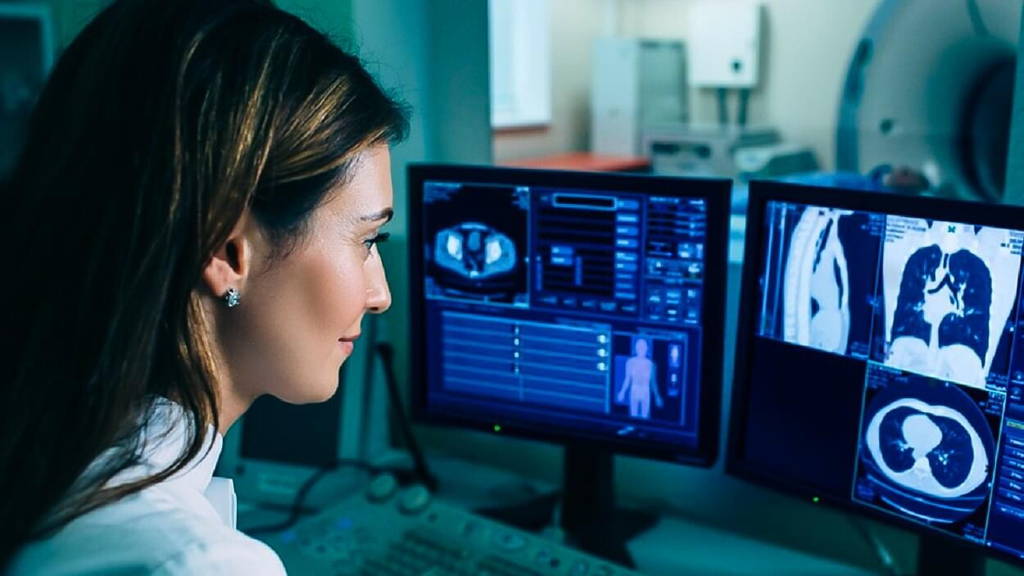Many professionals are lost between scientifical facts and buzz words like AI, radiomics, algorithms, machine learning etc. Some have concerns that precise and efficient algorithms will replace the radiologists very soon. The media regularly informs about AI-based systems that outperform doctors in analysing medical images. In an article recently published in Nature, Scott Mayer McKinney from Google Health describes an AI system that outperforms expert radiologists in accurately interpreting mammograms from screening programs. The research was conducted on mammograms for 25,856 women in the United Kingdom and 3,097 women in the United States. AI in radiology is growing rapidly – medical images consist of pixels that can be easily analysed by algorithms. What’s more, with a precision higher than a human eye.
Improving the decision process
Even if AI does add significant value to image interpretation, there are implications outside the traditional radiology activities of lesion detection and characterization. In radiomics, AI can foster the analysis of the features and help in the correlation with other omics data. Imaging biobanks would become a necessary infrastructure to organize and share the image data from which AI models can be trained. AI can be used as an optimizing tool to assist the technologist and radiologist in choosing a personalized patient’s protocol, tracking the patient’s dose parameters, providing an estimate of the radiation risks. AI can also aid the reporting workflow and help the linking between words, images, and quantitative data. Finally, AI coupled with CDS can improve the decision process and thereby optimize clinical and radiological workflow.
Will radiologists be replaced by AI? The simple answer is: NO
“Who will be responsible for an algorithm’s errors? Probably the radiologist. However, if we do not understand the rationale behind a software’s decision, are we willing to trust it, or would we rather continue following our instincts? But then what was the point in asking the algorithm in the first place? Similarly, there may be other ethical issues that will arise once artificial intelligence finds its way into clinical practice,” argues Daniel Pinto dos Santos from the European Society of Radiology.
Key points of the white paper:
- Outside the traditional radiology activities of image interpretation, AI is estimated to impact on radiomics, imaging biobanks, clinical decision support systems, structured reporting, and workflow.
- The key factor of AI performance is training with big and high-quality data to avoid overfitting and underfitting.
- The three laws of robotics could be applied to radiology, where the “robot” is the “AI medical imaging software.”
- If AI is used in clinical practice, the main medico-legal issue that then arises is “who is responsible for the diagnosis.”
Download the white paper here






